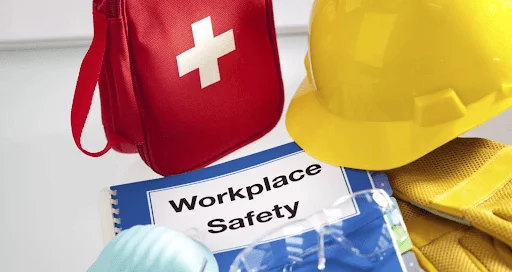
NEBOSH Online Conference 2025: Empowering Global Safety Professionals — Sponsored by Gulf Academy of Safety
In today’s rapidly evolving industries, safety isn’t just a regulation

In the modern workplace, ensuring employees, visitors, and property safety and security is paramount. Among the various risks that businesses must mitigate, fire hazards stand out due to their potential to cause significant harm and damage. This blog delves into Fire Safety tips at the workplace, offering guidance to create a safer and more secure environment. By adhering to these tips and fire safety guidelines, organizations can significantly reduce the risk of fire outbreaks and ensure the well-being of everyone on the premises.
Fire incidents in the workplace can lead to severe injuries, loss of lives, and extensive property damage. They can disrupt business operations, leading to financial losses and affecting the reputation of the organization. Implementing effective fire safety tips and workplace strategies is not just a regulatory requirement but a crucial aspect of responsible business management. By focusing on prevention, preparedness, and response, businesses can create a safer workplace for all
Creating a culture of safety within the workplace involves more than just following regulations; it requires a commitment from every level of the organization. Management should lead by example, ensuring that fire safety tips are integrated into daily operations and that employees feel empowered to report hazards and concerns. Regular updates to safety protocols, continuous education, and open communication can foster a proactive approach to fire safety.
Continuing from the importance of creating a culture of safety and a comprehensive approach to fire safety in the workplace, it’s essential to delve deeper into the practical measures and strategies that can further enhance fire safety. This additional content focuses on the integration of technology, the importance of individual responsibility, and the benefits of external audits in reinforcing fire safety tips workplace environments must adhere to.
Also Read Fire and Life Safety Audit Critical Issues | Safety Officer Techniques to Identify Hazards
The advancement of technology offers new avenues to improve fire safety in the workplace. Smart fire detection systems that provide real-time alerts and are integrated with building management systems can significantly reduce the response time in case of a fire. Additionally, the use of thermal imaging cameras and automatic shut-off systems for electrical and gas lines can help in the early detection and prevention of fire outbreaks. Investing in these technologies not only enhances safety but also demonstrates a commitment to protecting employees, visitors, and assets.
While organizational policies and procedures are critical, the role of individual responsibility in fire safety cannot be overstated. Employees should be encouraged to take ownership of their environment, ensuring that their actions do not contribute to fire hazards. This includes simple measures such as unplugging unnecessary electrical devices, disposing of waste properly, and reporting malfunctioning equipment or other hazards to the appropriate department. A vigilant workforce is a crucial line of defense against fire incidents.
External fire safety audits conducted by third-party professionals can provide an unbiased assessment of a workplace’s fire safety protocols and infrastructure. These audits can help identify overlooked risks and offer recommendations for improvements. They also ensure that the organization’s fire safety measures are up-to-date with the latest fire safety guidelines and best practices. By regularly scheduling external audits, businesses can maintain a high standard of fire safety, ensuring compliance and demonstrating their dedication to creating a safe working environment.
In conclusion, enhancing fire safety in the workplace is a multifaceted effort that involves staying informed about the latest fire safety guidelines, leveraging technology, fostering a culture of individual responsibility, and seeking external expertise. By integrating these elements into their fire safety strategies, organizations can not only comply with regulations but also significantly elevate the safety and security of their environment. Fire safety is an ongoing process of improvement, and through collective and individual efforts, workplaces can achieve a high level of preparedness and protection against fire-related hazards.

In today’s rapidly evolving industries, safety isn’t just a regulation

The UAE is recognized as a global leader in building

In an era where workplace safety, environmental stewardship, and sustainable